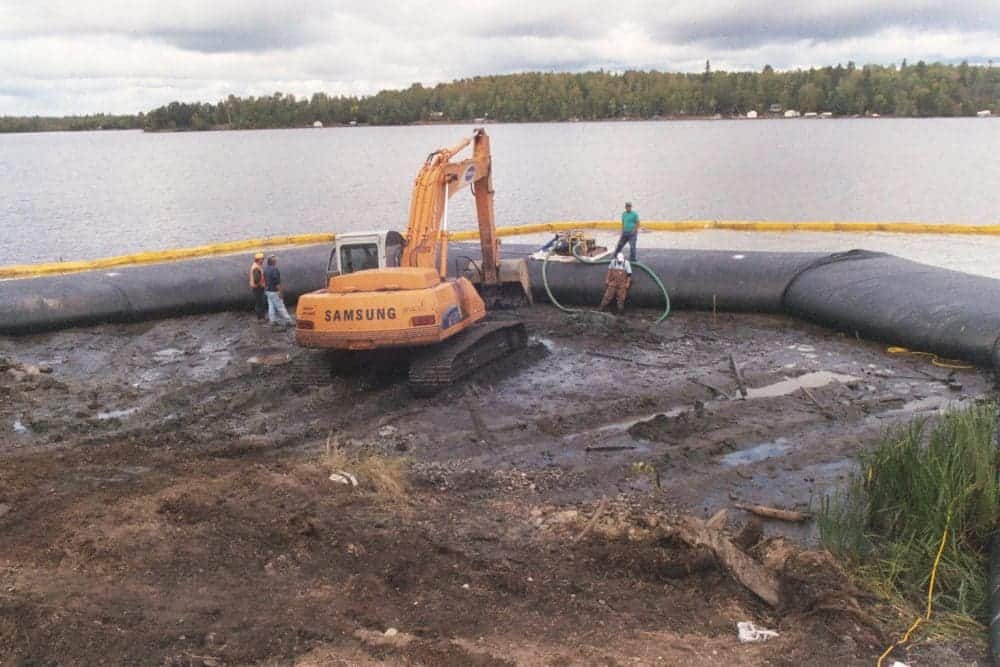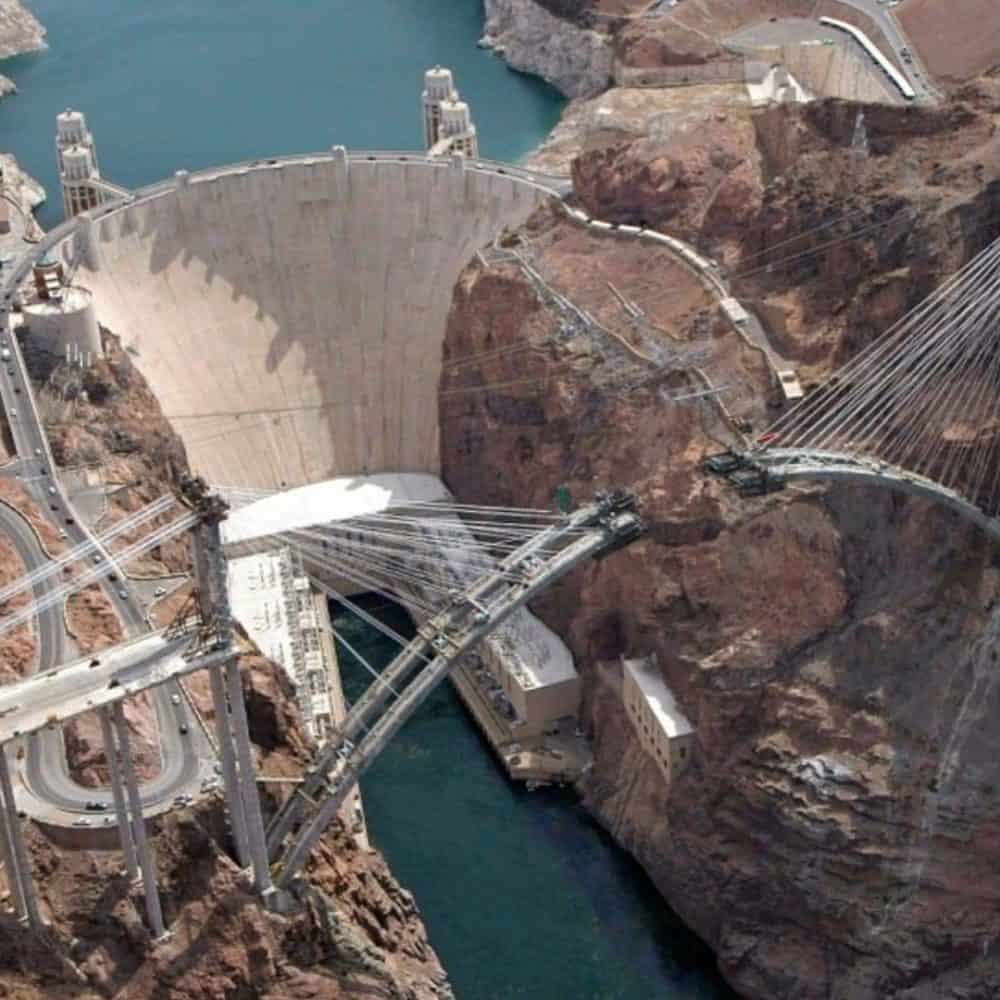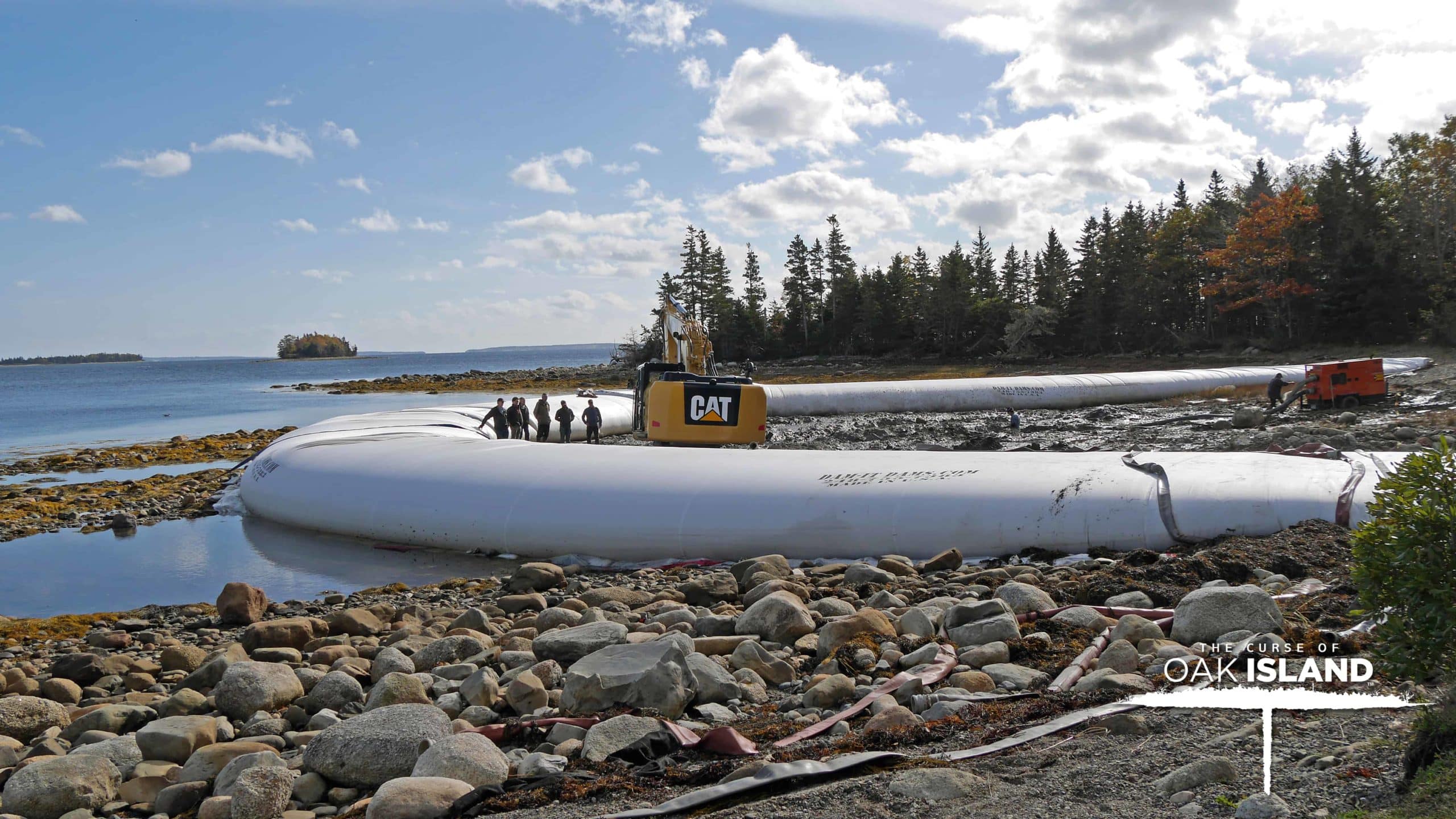
A Dam-It Dams cofferdam holds back water to create a temporary barrier around a project site.
There are many types of cofferdams. A cofferdam is defined as a temporary barrier in or around a body of water that allows the process of de-watering, diversion, or damming of water within an enclosed area. Cofferdams can be portable, and the major purpose of any type of cofferdam is to hold back overwhelming or inconvenient water and create a dry work environment. This allows your project to proceed with as little resistance and as much safety as possible.
Most Cofferdams usually fall into these categories:
- Cantilever Sheet Pile Cofferdam
- Braced Cofferdam
- Earth Embankment Cofferdam
- Rock fill Cofferdam
- Double Wall Cofferdam
- Cellular Cofferdam
Cantilever Sheet Pile Cofferdamsrock fill
This type of cofferdam is susceptible to leakage and flood damage, making these forms of damming better suited for smaller depths of water, up to 18 feet. They can be constructed of wood, concrete, or steel, each with its own size limitations in what they can handle. Wooden sheet pile cofferdam is suitable for up to 9 feet, steel sheet pile is suited for up to 18 feet head of water, similar to concrete, which suitable when headroom is limited. They are bored and cast in place and are to be used to avoid noise and vibration.
An Earth Embankment Cofferdam
This type of cofferdam is suitable for high heads of water with low velocity. A successful cofferdam does not need to be completely watertight because some seepage of water into the excavation is usually well-tolerated. The water collected is pumped out of the excavation afterwards. The embankment is provided with a free board minimum of 3 feet to prevent overtopping by waves. This type of cofferdam requires large base area and is adopted when an area of excavation is very large. Clay soil is appropriate for the construction in dry season. If constructed in wet season, sand fill is the best material.
Durable Rock-fill Embankment Cofferdams
This cofferdam type is made of rock-fill. A typical section rock-fill cofferdam is better than the earth fill. These are very previous and are usually provided with an impermeable membrane of soil to reduce seepage. The crest and upper part of the impermeable membrane are provided with a rap to protect against the wave action.
The Double-Wall sheet pile Cofferdam
This type of cofferdam is suitable when it is required to exclude water over 36 feet. This consists of two straight, parallel vertical walls of sheet piling tied to each other, and the space between them is filled with soil. Double-Wall sheet pile cofferdam higher than 7.5 feet should be strutted. Sometimes an inside berm is provided. Consequently, this helps to keep the phreatic surface within the berm.
Cellular Cofferdams
A cellular cofferdam is constructed by driving sheet piles of special shapes to form a series of cells. The cells are interconnected to form a watertight wall. This type of cofferdam is filled with soil and, as a result, provides stability against lateral forces. There are two types of cellular cofferdams, namely diaphragm type, and circular type.



